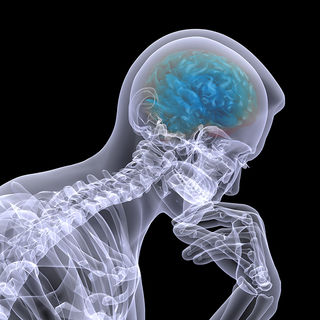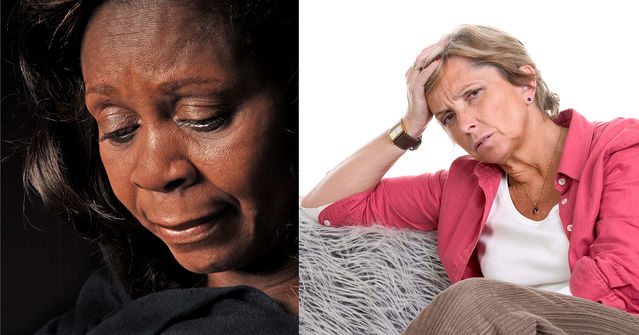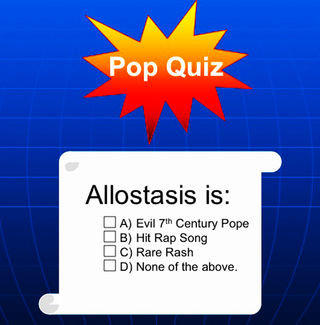Stress
Killing Us Softly
Stress American style: the pathophysiology of U.S. politics
Posted March 20, 2017

The brain’s Ventral Tegmental Area (VTA) monitors social connectivity because it is vital to human survival. Hence, things promoting social connectivity cause dopamine release, and things that do not decrease serotonin and norepinephrine.(1-3) Citizenship is a form of social connectivity. According to the news, President Trump’s election has left many American citizens feeling disconnected socially creating persistent stress.
Stress disrupts homeostasis and requires allostasis to restore equilibrium or balance between our internal and external environments. Allostatic stress response mechanisms are vital to human survival, but like car brakes

, when overused they become dangerous and go from being protective to destructive causing allostatic load.
Four Faces of Allostatic Load

Type I results from constant daily stressors and affects the heart first and foremost. Norepinephrine immediately responds to stress by coursing through the sympathetic nervous system accelerating the heart rate and increasing blood pressure to drive more oxygen to major muscles to prepare for the eventuality of fight or flight. Overactivation of this process causes damage to the blood vessels in the coronary arteries. The arteries become clogged with a sticky build-up setting the stage for atherosclerosis, and other cardiovascular diseases.(4)
Type II is the inability to habituate to stress because stress hormones do not return to baseline after the stress has subsided. It’s like being a lead –foot driver.(5)
Type III is the inability to stop stressing out after the threat is gone. Ever met a person who can’t let go of things? Age naturally compromises the Hypothalamic-Pituitary-Axis and Sympathetic Nervous System’s ability to interpret and respond when adrenaline and cortisol levels return to baseline. Overusing the stress response accelerates this process – the same way worrying will wrinkle a face before its time. (6)
Type IV causes the under production of stress hormones, which is associated with Asthma, Allergies, Lupus and Fibromyalgia.(7)
An Old Brain In A New World

We live in a modern world, but the stress response begins in the old mammal brain; when it is enacted, the newer, thinking part of the brain is taken offline because the priority is, “survive now, think later.” Also, the old mammal brain cannot distinguish between perceived and actual threat. Therefore, with the brain’s discerning cortex disengaged, the subcortical old brain structures over respond to constant innocuous threats like adversarial social media memes and divergent political opinions. Continuously preparing for the eventuality of fight-or-flight because that’s the only button on the old brain’s dial creates tremendous allostatic load. With that comes severe collateral health consequences that contribute to cardiovascular, metabolic and inflammatory diseases. So no matter who wins politically, medically we all lose because stress is devastating to human health, that’s just how human biology works – it’s a non-partisan issue. It’s also a critical issue because, without our health, we have nothing.(8)
Also, health consequences aside, there are other negative synergistic problems with America’s current high-stress levels. If our stress hormones are registering improperly or being misinterpreted, our emotional and social responses will reflect that. We have enough difficulty communicating without added challenges.

We are at a crucial juncture; there is no guarantee we will survive. If we do not figure out how to share the earth and the wealth, among ourselves and with the other species, as well as recognize that we live within the biosphere of our planet, not on it – we will not survive. This war is personal, pervasive and intimate. Thus, we have to get in it that way to win it.
The Gettysburg of this war is the moment. The key battles are informed eating to promote a healthy microbiome and subsequently better stores of neurochemicals that positively affect our mental state and our actions. Our primary weapons are exercise, yoga, mindfulness, guided imagery, meditation, and healthy family and personal communication. It is important to love and be loved; it is human, and humans flourish from participating in humanness.

The Enemy
Stress is the mortal enemy, not people with differing political opinions – no matter how disturbing, or off-centered those views may seem. All of us can only begin by seeing things the way they seem to us. Then with the advantage of other people's perspective, we can improve our own. However, we cannot take that journey if we are afraid to speak candidly. This is America, you must have the courage to speak your mind, and I must have the strength to hear it, whether we want to or not. Then together, we separate our perspectives from who we are in our hearts and we find a way because we are members of a social species, and we are members of a nation.
We’re all terrified – change is always terrifying and if one thing we all agree on – change must come, and it must come for all of us. Remain Fabulous and Phenomenal.

Join my email list to receive notifications of new posts
References
1. Gardner EL. 2011. Addiction and brain reward and antireward pathways. Advances in psychosomatic medicine 30:22-60
2. Bell MR, De Lorme KC, Figueira RJ, Kashy DA, Sisk CL. 2013. Adolescent gain in positive valence of a socially relevant stimulus: engagement of the mesocorticolimbic reward circuitry. The European journal of neuroscience 37:457-68
3. Nikulina EM, Johnston CE, Wang J, Hammer RP, Jr. 2014. Neurotrophins in the ventral tegmental area: Role in social stress, mood disorders and drug abuse. Neuroscience 282C:122-38
4. Logan JG, Barksdale DJ. 2008. Allostasis and allostatic load: expanding the discourse on stress and cardiovascular disease. Journal of clinical nursing 17:201-8
5. McEwen B, Lasley EN. 2003. Allostatic load: when protection gives way to damage. Advances in mind-body medicine 19:28-33
6. Juster RP, McEwen BS, Lupien SJ. 2010. Allostatic load biomarkers of chronic stress and impact on health and cognition. Neuroscience and biobehavioral reviews 35:2-16
7. Duru OK, Harawa NT, Kermah D, Norris KC. 2012. Allostatic load burden and racial disparities in mortality. Journal of the National Medical Association 104:89-95
8. McEwen B, Lasley, E. 2002. End of Stress as we know it. Washington, D.C.: Joseph Henry Press


